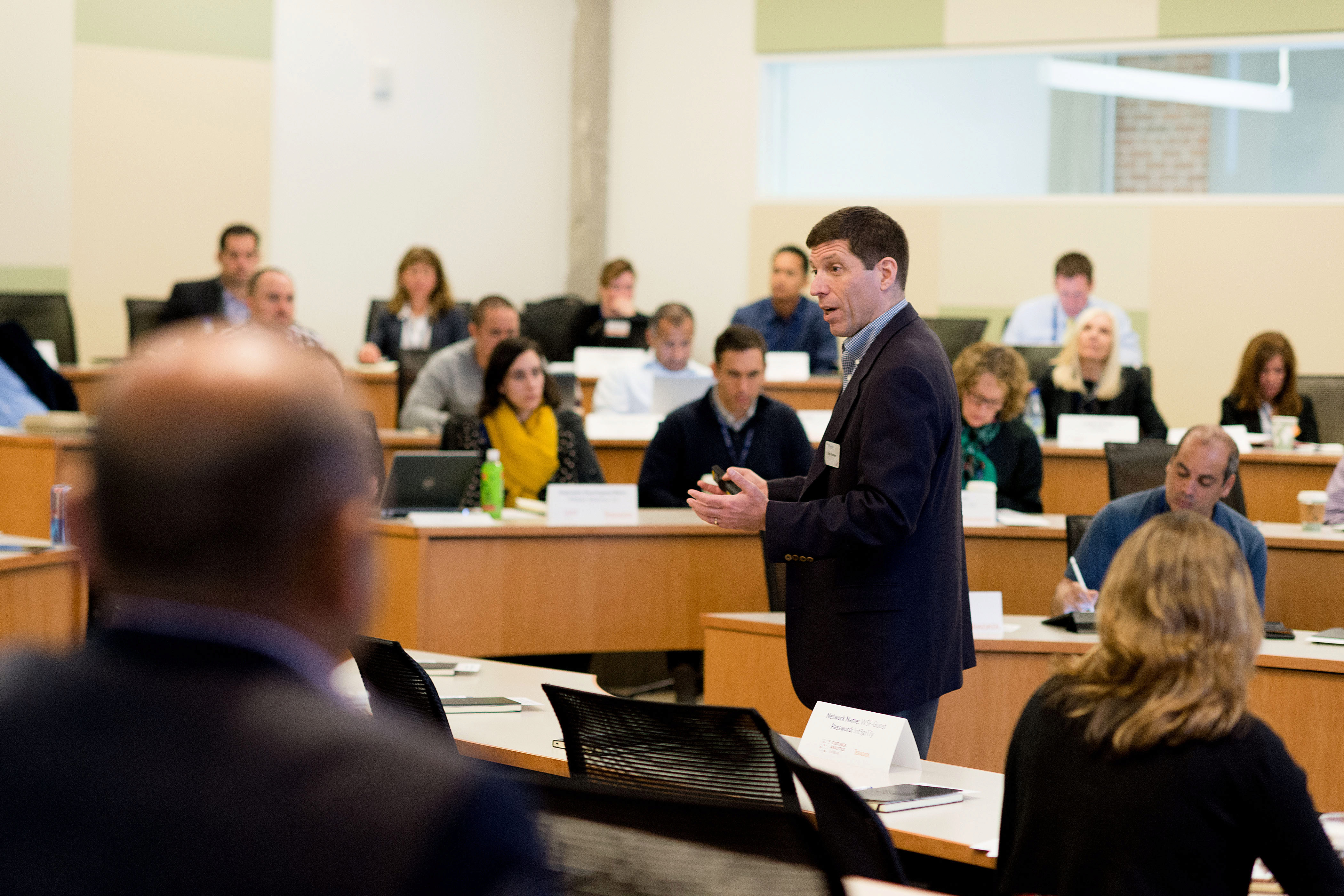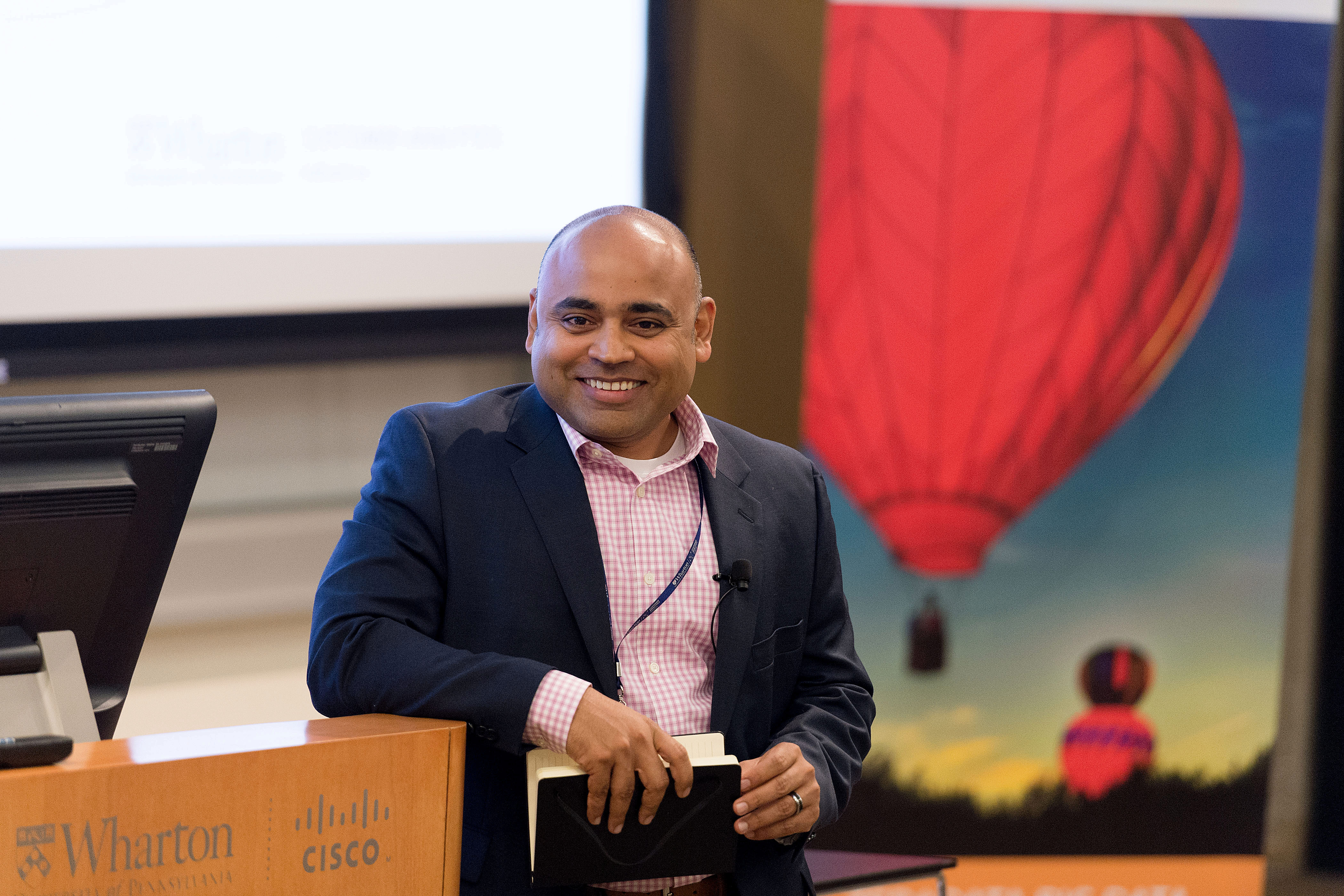Event Recap: How to Get Real Meaning from Marketing Data
A video recap of the day with Professor Bradlow, Mark Swenson and Mo Patel can be viewed here.
The digital marketing landscape still resembles the Wild West in some ways. There aren’t a lot of hard and fast rules and the rules that do exist change with each new piece of published research. Marketers do their best to stay current and nimble but it’s easy to fall into comfortable habits that theoretically may work yet aren’t always the most strategic path forward.
A recent event co-hosted by AIAB and Teradata offered fresh perspectives for marketers looking for ways to get “unstuck” and gain real meaning from data.
Perhaps one of the biggest challenges facing companies is measuring advertising attribution and ROI. Wharton Marketing Chairperson and AIAB Faculty Director, Eric Bradlow, who presented his recent research on this topic, emphasized that “fancy math” isn’t the answer, it’s often getting the right data that is the real problem.

Companies are collecting terabytes of data that tell them a lot about their customers. For example, a lot of companies can (and should be) calculating Customer Lifetime Value (CLV). Professor Bradlow explains that measuring advertising ROI is a question of measuring which customers are responsive to advertising and that high CLV doesn’t necessarily equal high advertising response. To figure out which customers are responsive Professor Bradlow breaks the problem down into two steps:
- Step one: set up your data collection correctly. Companies need to have marketing exposure data linked to CRM and transactional data in order to track advertising treatments at a granular level.
- Step two: conduct a multi-channel experiment using randomized holdouts. This will determine which customers respond to advertising and will give the organization unprecedented insights into the ROI of their advertising.
You can read Professor Bradlow’s paper here that outlines the methodology and research.
How to get a “goldmine of information”
Dovetailing Professor Bradlow’s presentation, Mark Swenson, a Principal Consultant for Teradata’s Customer Journey Center of Excellence, explored why it’s crucial that the right data is in the right hands.

The datasets that are useful to marketers — like transactional and marketing exposure datasets — often live within the enterprise marketing tools, usually stored in a place that’s inaccessible to digital marketers. As a result, they can only access what they collect directly: social media, email, website tagging, etc. In the end, marketers are trying to make decisions with only partial data.
Using website tagging as an example, he explained that marketers can ruin the customer experience they worked so hard to build. While tagging isn’t “inherently wrong,” it does present some challenges. Tagging only collects the data it’s assigned to tag, which means as marketers want to tag more behaviors or web properties they add more and more until the website becomes inundated and sluggish under the weight of the tags.
To get a more complete view of customers, Mark urges organizations to blend data collected from marketers with an enterprise marketing tool that will allow the company to leverage the right data. It would potentially be a “goldmine of information” if the marketing team could see the customer’s behavior across all channels and ultimately, associate advertising attribution across channels.

“Customers expect analytical innovation.”
Offering a current snapshot of “the state of analytics,” Teradata’s Practice Director, Artificial Intelligence & Deep Learning, Mo Patel, described companies’ data and analytics as segregated and static. In his experience with, there’s no interdepartmental sharing of information or it’s hard to get the information that marketers need to do their jobs effectively while also faced with outdated methods.
To steer clear of the ruts, Mo recommended that companies need to stay agile and embrace new technologies as they develop because, as he said, “Customers expect analytical innovation.” He clarified that while there should be some healthy skepticism around technology adoption, an organization with a modular analytics infrastructure is the way of the future. If companies can build a data and analytics platform that allows the organization to “swap out” aspects of their architecture, then they can stay current without having to reinvent their platform each time they want to upgrade the system.
Conclusion
It’s clear that from this event that Wharton, Teradata and the business leaders that actively participated are working on the right problems to usher in a new era of digital marketing. The diverse and highly active dialogue supported the insights shared and relevant theme of the day. And as data collection and analysis matures, the solutions to the current challenges will continue to emerge. A video recap with Professor Bradlow, Mark Swenson and Mo Patel can be viewed here.


